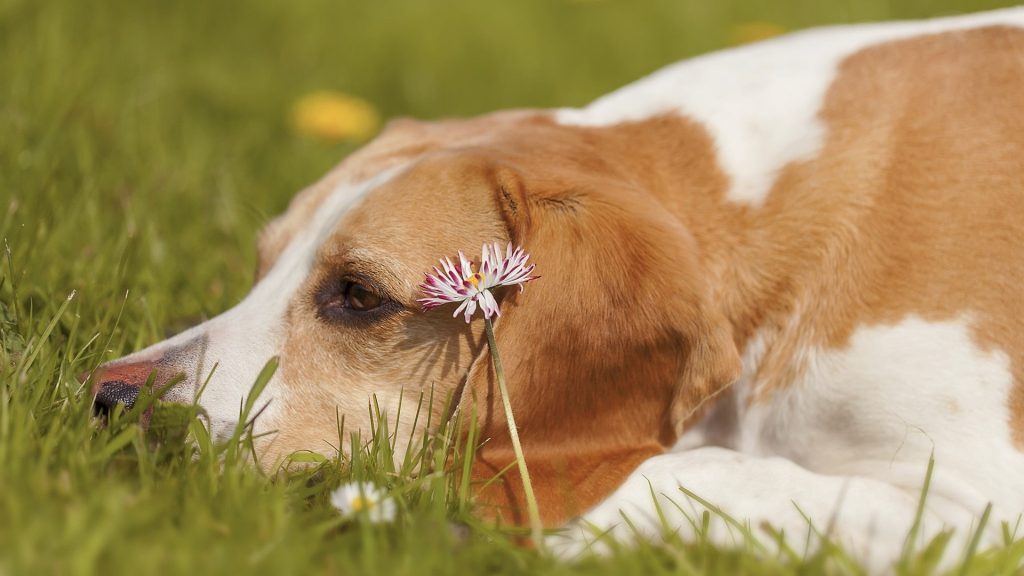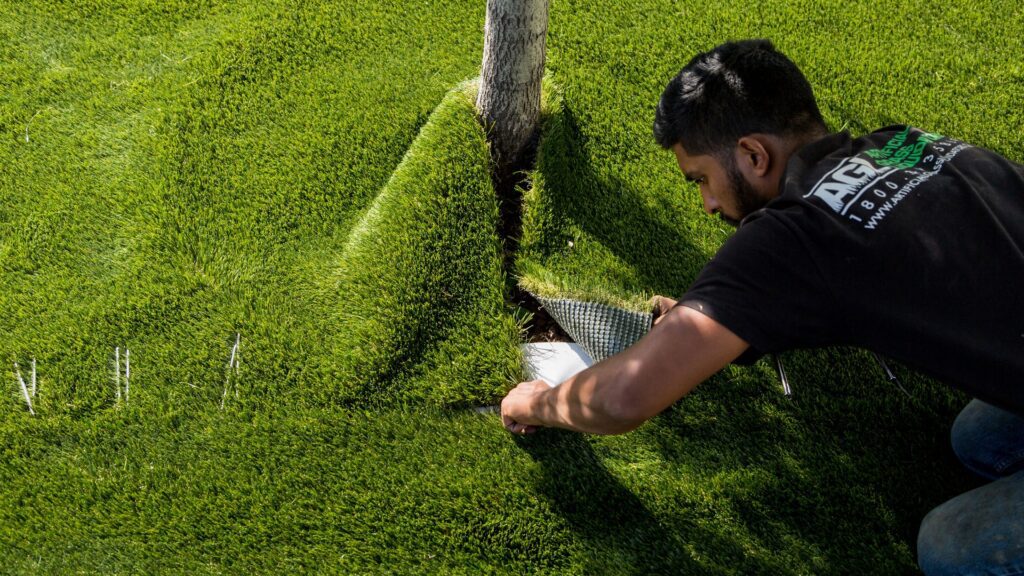
Fake Grass: Can You Make It Work On Your Lawn?
They say the grass is always greener on the other side, but what about if it’s artificial?
Fake grass has been used for decades as an easier alternative for a green lawn and it’s gained even more traction in recent years, but it might not be for everyone.
Does fake grass really work? Artificial grass can be laid in place of a real lawn or used to supplement some areas of it, and advancements in these products mean they’re more realistic than ever. Provided the grass is laid properly and is of good quality, there are lots of benefits to be had by using this artificial alternative in your yard. Fake grass has come a long way from the glaringly obvious bright green turf that used to be laid and it can be a smart option for some.
If you’ve been thinking about taking the artificial route but need to know all the facts, this guide will walk you through all of the usual questions about fake grass and the maintenance procedures it needs..
What is Fake Grass?
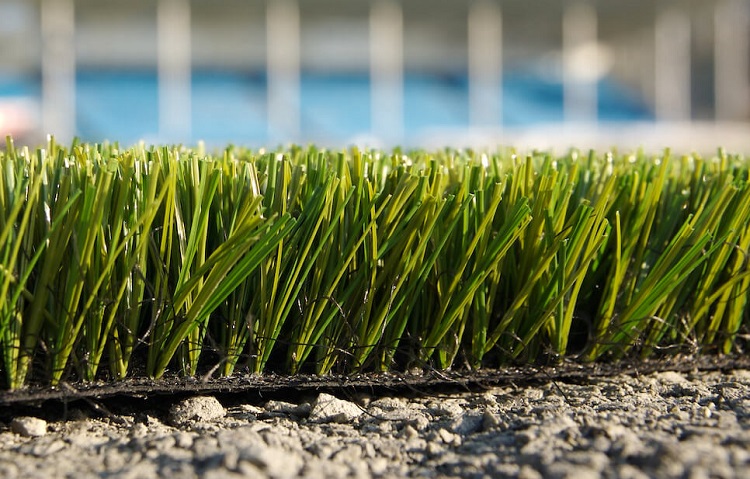
Fake grass is a term that can be used to describe any type of synthetic grass that’s been designed to look like real grass.
These carpets of synthetic fibers are also known as artificial turf, artificial grass, synthetic grass, synthetic turf, and sometimes AstroTurf, which was once a popular product name in this category.
The artificial grass blades are usually made of some type of plastic or other synthetic fiber and have gone through some changes since the first generation turf systems we used to know.
Today, third-generation artificial grass features infills made with sand and rubber crumb as well as longer fibers, for a more realistic and durable finish.
Fake grass has many uses outsides of the residential home, with people most commonly finding it at covered sporting arenas and areas that don’t have enough access to natural sunlight.
The hardy nature of the grass and the fact that it requires minimal maintenance makes it a popular choice for many different settings, including the average backyard.
The Features of Fake Grass
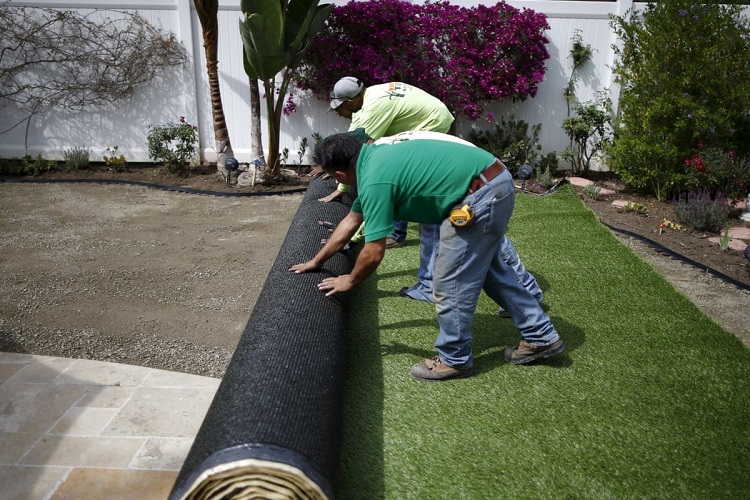
There are hundreds of manufacturers to choose from in your search for artificial turf, and many different types of grass as well.
The best way to establish what’s right for your property is to think about the purpose that the grass will serve and what features you want it to have, then choose something that best suits you.
- Weather-resistant: A good artificial turf should be resistant to extreme weather, including daily sun exposure, rain, and even snow. If you live somewhere with particularly harsh weather, you’ll want to spend more to ensure it’s protected.
- Color choices: Older styles of artificial grass usually only came in one color and it was this lack of diversity that made it stand out as fake right away. If realism is your goal, choose a multi-tone effect with a range of colors used for the synthetic blades, as it more closely emulates real grass.
- Weight: The general rule of thumb is that the heavier the artificial turf the better quality it is, so follow this if you’re looking for a premium product. A heftier turf will last longer, feel better under your feet, and be less likely to peel off or fly away in extreme weather, so it’s worth checking the weight.
- Permeability: Choose a grass with good permeability to ensure that things like drinks, rain, and pet urine will pass through it easily. You want the grass to have good airflow to reduce heat and the ability to absorb moisture through to the soil underneath it.
- Blade length: A longer blade of grass looks more realistic, and it’s even better if the grass comes with a variety of lengths. Not just for aesthetic reasons, as the longer lengths of grass also feel plush and more pleasant underneath your feet.
- Infill: The infill of fake grass is the piece that sits underneath the blades of grass and supports them. Choosing a thicker infill made of hard-wearing materials will ensure the grass remains upright and reinforced. There are various types of infill to choose from with features like eco-friendliness and durability promoted.
Can You Mix Fake and Real Grass?
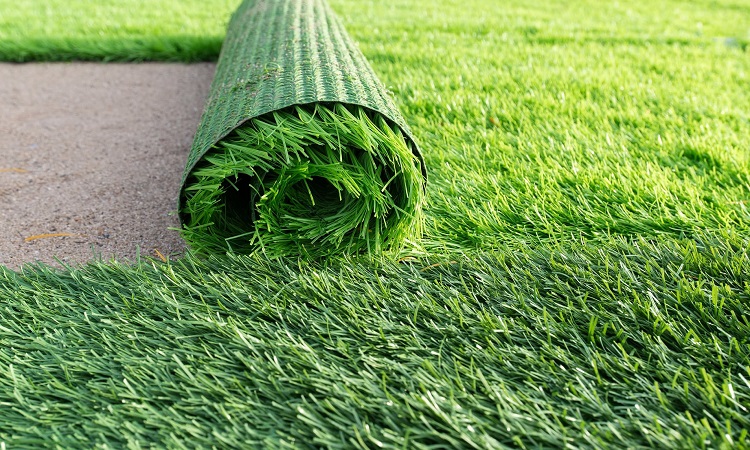
When assessing your property to see if it’s suitable for this type of lawn, it’s good to know that artificial lawn is not an all-or-nothing approach.
Some people find that only small parts of their lawn need to be replaced by artificial grass and others will want to cover the entire space, so it can be adjusted to suit your needs.
If you do plan on combining the two and laying them in the same space, you’ll want to ensure that the artificial grass you choose matches the real grass as closely as possible.
Otherwise, it’ll be glaringly obvious that one isn’t genuine and could end up ruining the aesthetic of the entire yard.
Another important consideration will be placing some sort of border or edging between the two types of grass.
As you’ll still be taking care of the genuine grass with a mower or trimmer, you don’t want to damage the artificial turf in the process.
This can again make the difference between the two even more obvious, so it requires some careful planning in how you’ll lay it all out.
Ongoing Care and Maintenance
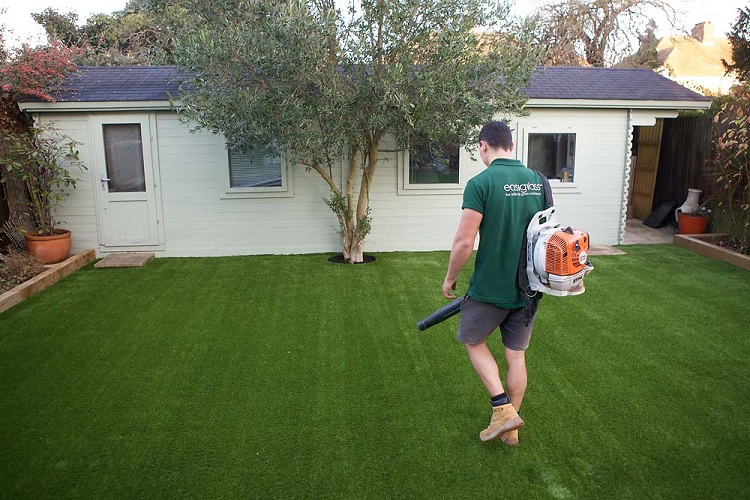
Artificial lawn is known as the low maintenance alternative but that doesn’t mean you can lay it and forget about it.
Just like a real lawn, it requires a little attention and some work to keep it looking fresh, albeit a lot less than the real deal.
Once a week, you should brush your artificial grass with a rake to remove any debris and help to fluff the fibers up.
If it has stains or there’s debris on it, make an effort to clean this more deeply and as soon as you notice anything. Every fortnight, rinse the grass with the garden hose to get keep it clean.
How you use your yard is also important, with the most critical point being not to use any corrosive chemicals near your artificial grass.
Keep in mind that natural debris like bird droppings and dead bugs can also release corrosive materials, which is why the earlier point of removing anything immediately is so crucial.
Artificial lawns can be exposed to contaminants that might not normally matter to real grass, including pet waste, food and drink, and mold.
Ensuring that you remove and clean anything that’s spilled, and as soon as it happens, will ensure your grass lasts for more than 20 years, so it’s worth the small amount of effort.
The Benefits of Laying Fake Grass

Fake grass has come a long way from just a decade ago, and it offers loads of benefits that could be enticing to the modern homeowner.
Here are some of the advantages of giving the artificial lawn a try in your backyard:
- Environmentally friendly: With lawn care using an estimated third of every household’s water usage, it’s easy to see how fake grass can be better for the planet. There are lots of manufacturers out there dedicated to creating the most eco-friendly artificial alternatives so they go beyond just saving water.
- Low maintenance: If you’re sick of mowing the lawn every weekend or applying a pesticide or top dressing regularly, fake grass could be the way to go. Although there is some maintenance required it’s generally known as the easier alternative.
- Stays vibrant looking: Advancements in plastics and other materials used to make artificial turf mean it now looks better for longer. There’s no risk of drought drying it up or patches developing that need filling it, so it always stays vibrant.
- Liquid permeates through: Unlike the older styles of artificial grass, these newer ones allow liquids to permeate through to the soil underneath easily. Nothing pools on top and even your pet’s urine will pass through without a fuss.
- It’s durable: Kids and pets can run wild on fake grass without the parents ever having to worry about the damage being done. These artificial lawns are incredibly tough and can last for up to 25 years with regular use.
Downsides to Consider

It’s not all roses when it comes to fake grass though, and there are downsides worth considering. Before you start laying your new artificial turf, think about the disadvantages it comes with:
- It’s not real: No matter how you slice it, fake grass will always be fake. As you’re laying plastic down where real grass should be, you won’t be able to help but notice that it doesn’t look or feel exactly like the real thing no matter how much you spend on it.
- Overheating: As the sun beams down on your artificial lawn, it will also be retained there for a lot longer. People notice that in the middle of the day especially, their grass is hot to step on with bare feet, which can take some of the fun out of enjoying your backyard.
- Can be costly: On the upper end of the scale, some people spend more than $7,000 to lay artificial turf in a standard-sized yard. Although this is for the premium product, it’s still worth noting that this is a major investment that might be way out of some people’s financial reach.
- Doesn’t absorb waste: If your dog does a poo on the back lawn, you can’t simply let it break down naturally. Solid waste like this will not be able to move off of the artificial grass as only liquids will be able to pass through.
- Potential pollution: Installing artificial grass made with non-environmentally friendly materials can lead to pollution, due to the rubber granules and synthetic blades being washed away and ending up in our waterways. Therefore, choosing a brand with eco-friendly materials is essential.
Fake It ‘Til You Make It
Artificial grass might be the perfect solution for some gardeners, whether you want to cover your whole lawn with it or just some patches that need help.
Although not entirely maintenance-free, it offers an easier and greener way to keep a lawn, so consider checking out how far it’s advanced.
Related Questions
Using artificial grass may seem sacrilegious to some gardeners but when you consider how much easier it is to take care of, it’s not all bad.
If you have further questions about fake grass and want to learn everything you can before you commit, read on as we answer some FAQS that others have had.
Is Fake Grass Expensive?
Yes, fake grass can be expensive to install depending on the type and quality, with most people paying between $2,000 and $6,000 for an average-sized lawn to be completely covered.
However, the costs don’t seem as excessive when you consider how minimal the ongoing care is, such as not having to mow, trim, or treat the grass with fertilizers and herbicides.
Does Fake Grass Get Hot?

Depending on the type of artificial grass, it can get hot when exposed to direct sunlight for more than an hour.
Unlike real grass where the heat becomes absorbed by the soil below it, the pile of artificial grass is where the heat is trapped which can make it hot to stand on for some time after.
How Long Does Artificial Grass Last?
The lifespan of an artificial lawn depends on its quality and construction of it, with cheaper products lasting around 10 years and high-end grass up to 25 years.
The ongoing maintenance provided by the owner and the conditions it’s exposed to will also dictate how long the lawn lasts.
Resources:

